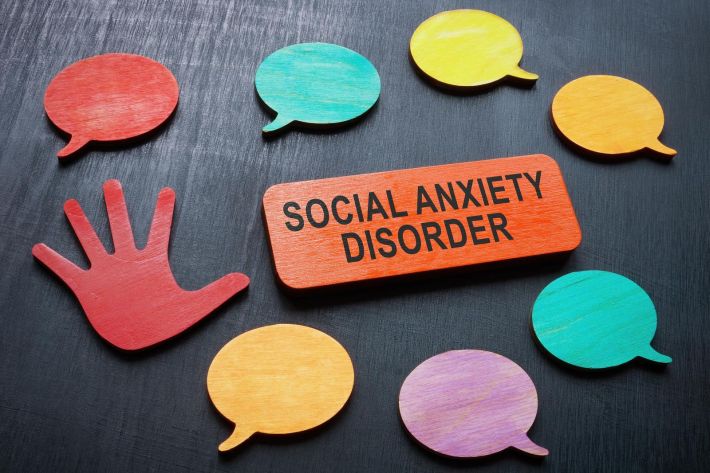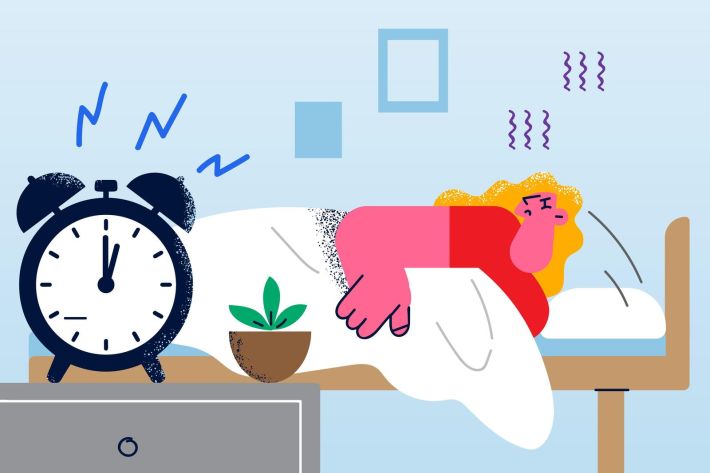- in Anxiety by Tony
- |
- 1 comments
Is there a misunderstanding about anxiety in teenage girls?

Anxiety is a common emotion experienced by people of all ages, but have we misunderstood its impact on teenage girls?
In today's fast-paced, high-pressure world, it is essential to understand the unique challenges that young girls face.
More...
This article aims to shed light on the misconceptions surrounding anxiety in teenage girls and explore ways to support their mental health better.
Over the past decade, the number of American children and teenagers admitted to children’s hospitals for reporting suicidal thoughts has more than doubled. Some have not received help in time; after declining for years, the suicide rate for 15-to-19-year-olds shot up between 2007 and 2015, increasing by 31% for boys and more than doubling for girls.
Teenage anxiety in the post-COVID era has become more prevalent due to various factors. The pandemic has upended the lives of teenagers, disrupting their routines, social interactions, and education.
The uncertainty surrounding the virus, the fear of getting infected, and the constant changes in restrictions and guidelines have all contributed to heightened anxiety levels.
School psychologist Dr Lisa Damour frequently have girls seeking help for anxiety issues during a typical week. The University of Oxford's latest research found that social media is responsible for only a tiny portion of teenagers' unhappiness, despite it often being blamed.
Lisa agrees with this research, stating that social media tends to magnify what is already occurring in their lives and is not a separate entity. In her new book, Under Pressure, Lisa Damour, a clinical psychologist and leading authority on teenage girls, argues that a certain level of stress and anxiety is typical and can have positive effects.
Being a professional working in a high-achieving private girls' school in Ohio and having her own practice, She observed that girls often discuss anxiety as a serious and lifelong condition. This realisation prompted her to write a book, as she noticed that almost every conversation she had at was centred around stress and anxiety in the past decade.

According to her, this phenomenon may be attributed to our cultural belief that negative emotions should be avoided and that relaxation and calm are highly valued. She believes that striving for constant peace and tranquillity is not necessarily beneficial, as it is unattainable and can result in disappointment and stress.
The author argues that the increasing use of quasi-medical diagnostic language can pathologise usual emotions, such as anxiety being used to describe nervousness and depression being used to express sadness. It was also noted that children are sometimes labelled as having "social anxiety" when they are shy in a culture that values extroversion.
She expresses a concern about reducing a broader range of emotional vocabulary. Educating teenagers about the distinction between positive and negative anxiety and healthy and unhealthy stress is occasionally necessary.
Having the Courage to Step Out of Your Comfort Zone

Understanding the distinction, she emphasises the importance in that at some point in time, we adopted the belief that emotional discomfort is always negative. However, both logical reasoning and scientific studies indicate that the pressure of pushing ourselves beyond our comfort zones aids in personal development.
Similarly, physical exercise may not always be pleasurable, but we acknowledge its health benefits.
According to her, stress can benefit a teenager who still needs to prepare for an exam. She advises them that not starting to study is the appropriate response, and that they will feel better once they begin learning.
Anxiety is the body's natural response to a perceived threat, serving as an alert to be mindful of our options, similar to how physical pain warns us to avoid touching a hot stove. Stress and anxiety can be detrimental when they persist.
Unhealthy stress occurs when it becomes chronic, and there is no opportunity for respite, while unhealthy anxiety is characterised by constant alarm without cause or an exaggerated response to events.
Accordingly, Lisa acknowledges that some girls and boys experience chronic issues. She suggests that girls may be more involved due to their tendency to take schoolwork seriously and worry about it.
To determine what is expected, Lisa advises considering if the child feels unable to recover, gets sufficient rest, and never feels adequately equipped for the demands placed on them, which is considered unhealthy.
Lisa recommends cognitive behavioural therapy for chronic anxiety, and often suggests psychodynamic psychotherapy when there is an underlying cause for the concern.
Parents often deal with stress and anxiety on a daily basis, and it can have a big impact on them. It's a bit worrying that our natural parental instincts can sometimes make things worse. If a parent gets just as upset as their child, it lets the child know that there's a serious problem.
However, if the parents can remain calm and composed, they can help children feel that any problem can be dealt with.
Empathy is more beneficial than reassurance

Telling a stressed individual not to worry may be dismissive instead of reassuring. According to a child's psychologist, the youth may feel that their concerns are not being taken seriously, causing them more distress in an attempt to acknowledge their problems.
A slight change from saying, "Don't worry, it will be fine," "This situation is significant, but I believe you will be alright" can have a powerful impact. You are engaging in a game of worst-case scenarios.
Girls benefit from strategising and discussing their concerns, even if they seem exaggerated. By asking them about the worst-case scenario and what they would do, it helps them feel more in control.
For example, if a girl is worried about not having a friend to sit with at lunch, she could suggest asking someone early in the day to eat lunch together. By prompting her with questions like "What if that doesn't work?" she will develop alternative ideas and learn how to manage her anxiety with this problem-solving strategy.
Ensure that they address the challenging situation. Parents often have the instinct to protect their children from things that cause anxiety, allowing them to avoid situations such as tests, sleepovers, or school plays.
According to a child psychologist, this avoidance can provide immediate relief. Still, it prevents children from learning to manage these situations and can result in entrenched fears of everyday stressful experiences.
It is crucial to help children move towards these threats rather than running away from them. Can you assist them in managing their panic and breathing?
What teenage girls describe as a panic attack may not meet the "true" attack criteria, as there is no official diagnosis. It is often characterised as a period of intense nervousness. However, the treatment remains the same.
Academic Stress

When a person is under high stress, the brain communicates with the lungs, causing them to breathe faster and more shallowly. This is done so that oxygenated blood can be quickly delivered throughout the body in preparation for fight or flight.
However, when we consciously slow down and reduce the vagal tone by breathing and taking deep breaths, the body recognises this change and signals to the brain that everything is fine.
Alternatively, they can engage in activities that promote relaxation and self-care, such as yoga or mindfulness meditation.
This can help prevent a panic response.
The preferred breathing technique for this is square breathing

- Take a slow breath, counting to three.
- Please hold your breath for three seconds.
- Take a slow exhalation, counting to three.
- Take a three-second pause before repeating the process a few additional times.
Reframing is an influential tool when it comes to managing anxiety in adolescents. Reframing involves changing how a person views a situation or experience to gain a more positive outlook.
Remind them they are not alone in feeling anxious and that other people understand and are willing to help.
Please provide them with instructions on how to interpret social media.
Social media is not real life, and girls need to be reminded of that. Damour describes it as a "big furniture showroom" where news feeds only show the best moments. Instead of judging, offer support and encourage them to gain perspective by stepping back. This includes engaging in literary criticism of their friends' online narratives.
View school stress as a learning opportunity.
Research has indicated that informing individuals that stress can positively affect creativity, success, mood, self-esteem, and work quality can result in sustained improvements.
Furthermore, do you see the stress as a threat or a challenge?
A study specifically showed that informing individuals that stress symptoms, like a racing heart, can enhance performance can reduce stress during challenging experiences. There is always room for growth, and their work schedules and tests are intended to develop endurance or resilience for life after school.
Assist them in getting a sufficient amount of rest

Adolescent girls typically experience less sleep than boys, which may contribute to their higher anxiety levels. Sufficient sleep enables individuals to better cope with life's challenges, while lack of sleep can lead to feelings of overwhelm and fragility.
Depression is common in young girls and women because they face challenges such as body image issues, social isolation, or academic stress.
Teach girls who strive for perfection to put in less effort. Lisa argues that anxious perfectionist girls may struggle with efficiency in their schoolwork. The more nervous they become, the harder they work, creating a vicious cycle which then becomes an unattainable but often receiving praise for their efforts, sending them the wrong message.
However, this approach could be more sustainable and lead to burnout at higher academic levels. Additionally, it can leave these girls with confidence in their work ethic but lacking confidence in their abilities.
Lisa suggests it may be more beneficial to advise perfectionist girls to adopt a more laid-back approach, similar to stereotypical boys, to avoid unnecessary stress.
This involves determining the minimum effort required to achieve desired learning outcomes or grades and stopping there.
In conclusion: With increasing academic demands, social media influence, and the stress of fitting in, teenage girls face a range of anxiety-inducing factors.
However, it is essential to distinguish between typical teenage emotions and genuine anxiety disorders. By understanding the unique manifestations and triggers of anxiety in teenage girls, we can empower them to seek help and create a healthier and more supportive environment for their mental well-being.






[…] value depends on several factors such as personal preferences, therapeutic goals, the severity of anxiety symptoms, and the expertise of the therapist. It is recommended to consult with a mental health professional […]